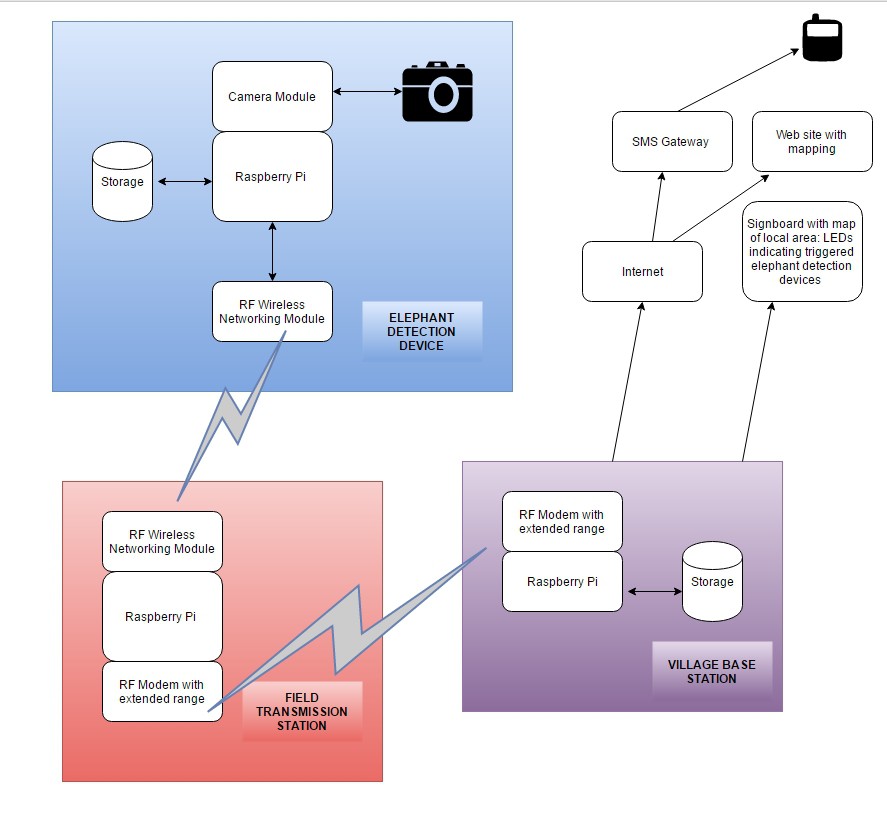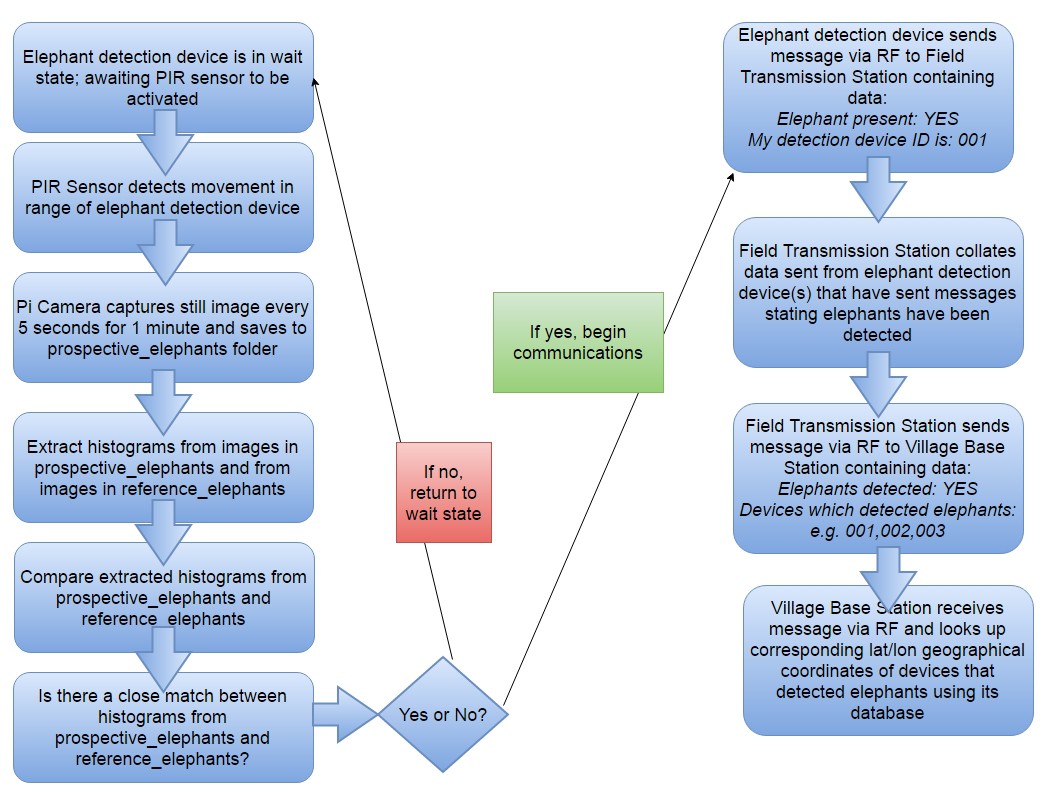How can we solve the challenge of detecting elephants in order to provide local people with advance warning of their presence? Advance warning being particularly useful in that it can: a.) prevent people stumbling upon elephants unaware and spooking them b.) allow interception of crop-raiding elephants before they reach the crops (this is thought to be safest and easiest time to deter them). Early detection of elephants will mitigate human-elephant conflict, thus preventing death and injuries of both elephants and humans.
This short video from http://www.wcs.org shows elephants launching their crop-raiding mission during the night,and the local people trying to scare them away.
In this solution, small weatherproof cases containing required elephant-detection system (elephant detection device) hardware will be tree- or pole-mounted in locations previously identified as being known to be passed by elephants. These locations could be a) interfaces between forests and farmland b) elephant pathways (these are the established trails that elephants use to move between, for example, forest and watering areas c) frequent railway-line crossings.
The elephant-detection system (elephant detection device) hardware will comprise [see them here]:
- Raspberry Pi 3
- camera module
- communication via RF [or can make use of 3G if we are lucky enough to have coverage/ or GPRS as outlined in this log] short-range (120m) using XBee 2mW RF transmitters for sending to the field transmission stations
- storage for image database (SD card)
- solar panels and associated components
- PIR sensor
It's imperative that the elephant-detection device is of very low-cost (<£100), as multiple devices will be required, and the budget of villagers affected might not be very high. The purpose of an elephant-detection system being open-source, is so that villagers can access plans, download software, purchase components, and assemble the system themselves; placing detection devices where they expect elephants!

How do we detect an elephant from the images that the camera obtains?
The most challenging part of the project is comparison of taken images of suspected elephants with known images of elephants! This would be quite easy if using MatLab, but this is not open-source and it's very expensive! Instead, I'm using OpenCV in Python to either compare histograms (the fastest and least intensive re processing & resources) or to feature match (slower and more resource intensive). This processing will be accomplished using the Raspberry Pi's on each elephant detection device, and the detection results will be transmitted via RF to the field transmission stations, and then onwards to the village base station.
I've outlined the different methods I'm testing in the following project logs:
- See this project log for outline of using FlannBasedMatcher and FLANN ( Fast Approximate Nearest Neighbor Search Library ) for feature matching,
- See this project log for outline of using histogram comparison with Python and OpenCV
- See this project log for more advanced methods
This is an example overview of software and hardware activity on the elephant detection device, and the outcomes that positive and negative results of elephant detection would trigger. In this example, the histogram comparison method was employed:

Example placement of elephant-detection system components
As an example, I have used Sansiajang, Odisha, India. This village was identified in 'Human-Elephant Conflict: Case Study from Balasore and Rairangpur division of Mayurbhanj Elephant Reserve, Odisha, India' as being afflicted by human-elephant conflict.

 Neil K. Sheridan
Neil K. Sheridan









Hii neil, your project is very good. As we are thinking to use the same concept to detect tigers in india. we need your help to implement this idea so can you please explain us about how we can design circuit diagram?. if you have any suggestion regarding this idea then you are most welcome!